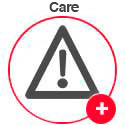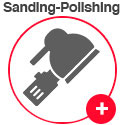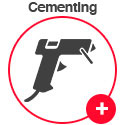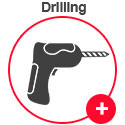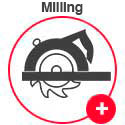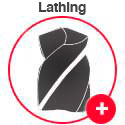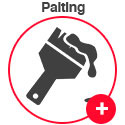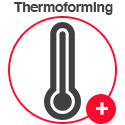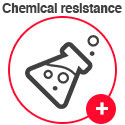Chemical resistance of Vical SA acrylic sheet
| Chemical Substance |
Code |
Chemical Substance |
Code |
| Acetic Acid (10%) |
LR |
Hydrogen Peroxide (3%) |
R |
| Acetic Acid (Glacial) |
NR |
Isopropyl Alcohol |
LR |
| Acetone |
NR |
Kerosene |
R |
| Ammonium Chloride |
R |
Lacquer Thinner |
NR |
| Benzene |
NR |
Methyl Alcohol (100%) |
NR |
| Calcium Chloride |
R |
Methyl Ethyl Ketone |
NR |
| Carbon Tetrachloride |
LR |
Methylene Chloride |
NR |
| Chloroform |
NR |
Nitric Acid (10%) |
R |
| Chromic Acid (10%) |
LR |
Nitric Acid (100%) |
NR |
| Chromic Acid (conc.) |
NR |
Phenol (5%) |
NR |
| Diethyl Ether |
NR |
Sodium Chloride |
R |
| Dyoctyl Phtalate |
LR |
Sodium Hydroxide (10%) |
R |
| Ethyl Acetate |
NR |
Sodium Hydroxide (60%) |
R |
| Ethylic Alcohol (30%) |
LR |
Sodium Hipochlorite |
R |
| Ethylic Alcohol (95%) |
NR |
Sulfuric Acid (3%) |
R |
| Ethylene Dichloride |
NR |
Sulfuric Acid (conc) |
NR |
| Ethylene Glycol |
R |
Toluene |
NR |
| Gasoline |
LR |
Trichloroethylene |
NR |
| Glycerine |
R |
TurDentine |
R |
| Hexane |
R |
Water (disttiled) |
R |
| Hydrochloric Acid |
R |
Xilene |
NR |
R = Resistant. Vical withstands this substance for long periods and at temperatures up to 120°f (49°c).
LR =Limited Resistance. Vical only resists the action of this substance for short periods at room temperatures.
NR = Not Resistant. Vical is not resistant to this substance. it is either swelled, attacked, dissolved or damaged in some manner.
| LR |
Diluted Acids, Aldehydes, Aliphatic hydrocarbons, Bases |
| NR |
Acids (c); Alcohols; Esthers; Aromatic Hydrocarbons y Halogens; Ketones; Vegetable Oils, Oxidants agents |
